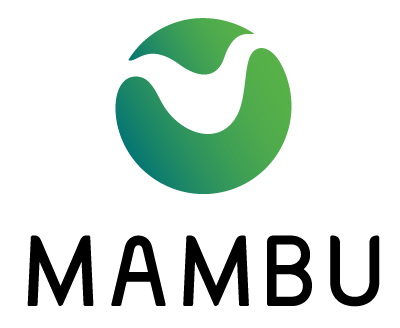- 26 Oct 2021
- 5 Minutes To Read
- Print
- DarkLight
- PDF
Overdraft Products
- Updated On 26 Oct 2021
- 5 Minutes To Read
- Print
- DarkLight
- PDF
With the Current accounts-type deposit product, you have the option to allow overdrafts. If you select this option, the accounts created under this product will allow for withdrawals beyond zero, meaning the balance can be negative up to a certain limit provided on creation of the account.
When the account goes negative, interest starts being accrued on the account and will be charged regularly according to the settings provided for the product being used.
Overdraft Setup
When setting up a deposit product, in the Overdraft Conditions section of the Creating a New Deposit Product form, select the Allow Overdrafts checkbox.
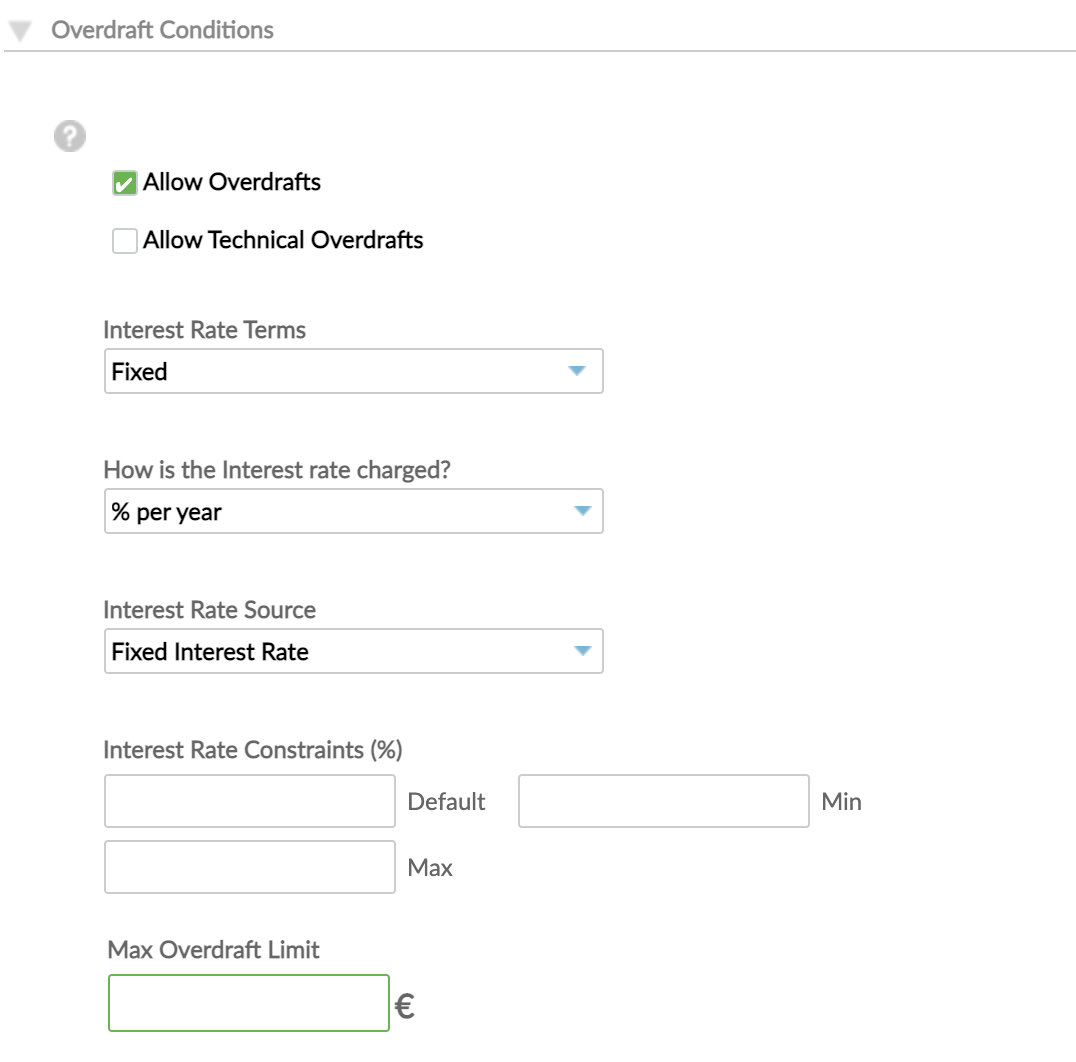
When creating a product with an overdraft facility, please consider the following two sections:
Interest Rate
This section refers, for the most part, to the application of positive (credit) interest on current account products. However, the When is the Interest Paid Into the Account? setting defines how frequently both positive (credit) interest and negative (debit) overdraft interest will be applied. If no interest application frequency is selected here, overdraft interest will not be applied to the account, only accrued, and will have to be applied manually.
If you don't want to pay positive (credit) interest on overdraft accounts, you will still need to enable interest by checking the Interest paid into account? box but can enter '0' in the fields for default, maximum and minumum interest rate. With this setup, any accounts created under this product will not pay any interest to your clients and only negative interest will be charged in case the account balance goes below 0 (as per the be settings defined in the Overdraft Conditions section).
Overdraft Conditions
If the option to Allow Overdrafts is enabled for the product, the following settings become available:
Interest Rate Source
Two sources of interest rates are supported for Deposit Products allowing overdrafts:
- Fixed Interest Rate: Remains fixed for the entire term of the loan.
- Index Interest Rate: A floating interest rate, also known as a variable rate. It is calculated as a sum of a reference (benchmark) index interest rate and a specified spread (margin). As a result, the index interest rate will change together with changes in the reference (benchmark) index interest rate.
If the Index Interest Rate option is chosen, additional fields will become available:
- Index source: Here you can choose the source of your index rate from a predefined drop down list.
- Interest Spread constraints: To define constraints of spread that will be added to the reference index rate (default, minimum and maximum) when creating a new account under this product.
- Interest Rate Review Frequency: How often should the overdraft interest rate be updated (reviewed).
You can find more details and examples of overdraft interest rate calculations in Overdraft Interest Calculation.
Mambu does not support negative interest rate from overdrafts. Thefore if index interest rate source has a negative sign, please make sure that after adding a spread, interest rate sign is positive :
Index rate + Interest spread > 0. If you need to use negative interest rate on overdraft, please contact your Customer Success Manager.
Max Overdraft Limit
Maximum Overdraft Limit is a maximum negative balance that the current account can reach. No withdrawals will be possible beyond this limit.
When creating new accounts under this product, users will be able to arrange an overdraft with their clients for any amount up to the maximum amount given here.
Balance used for calculation of interest
You can select to use either the minimum daily balance or the balance following any End of Day processes to calculate interest to be applied.
Days In Year
You can choose from four different day count methods for interest calculation on overdrafts:
- Actual/365 Fixed (365 days) is the method that calculates the interest daily by counting the actual number of days in the calendar and uses a fixed 365 year length.
- Actual 360 is the method that calculates interest daily by counting the number of days in the calendar, but uses a fixed 360 year length.
- Actual/Actual ISDA is the method that calculates the interest daily by counting the number of days in the calendar and also considers leap year.
- 30E/360 (360 days) counts the days from the calendar, but also introduces some changes on the months with 31 and 28 days.
Accounts managed under Credit Arrangements (Lines of Credit)
In this section you can decide if accounts created for this product can be managed in a line of credit or not. Under Accounts Managed under Credit Arrangements (Line of Credit) setup, you will find the following options:
- Optional (default): Accounts created on this product can be managed in a line of credit, but it’s not required to have them under lines of credit
- Required: The account can’t be approved if it is not associated with a line of credit
- No: Accounts for this product are not allowed to be managed in lines of credit
You can read more in our article about Managing Credit Arrangements.
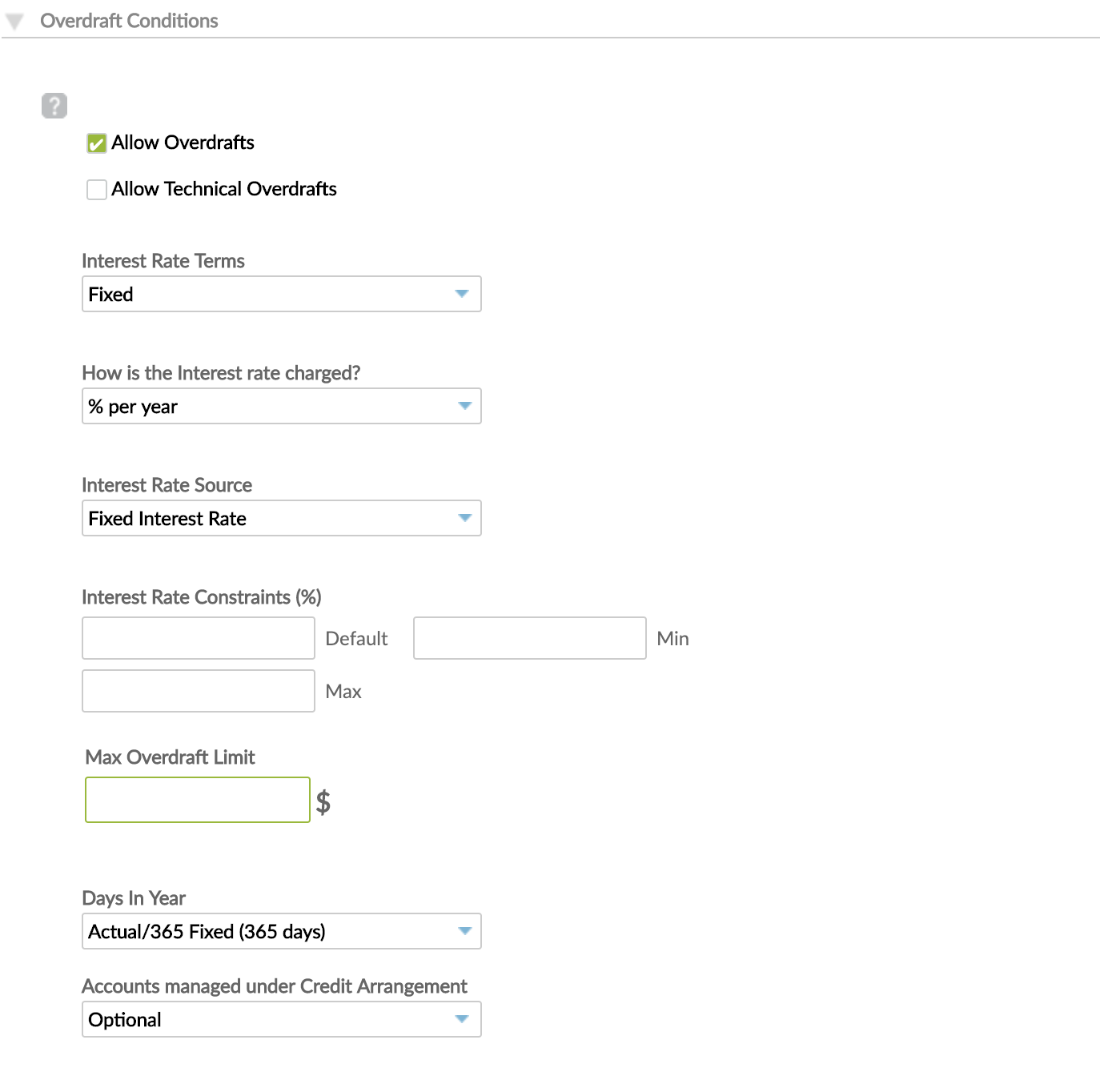
Technical Overdraft
Technical overdrafts allow funds to be withdrawn from an account beyond the agreed overdraft limit. Technical overdrafts for deposits can be enabled on the product level and will apply for all accounts created under that product. More information on technical overdrafts is available in this article.
Technical Overdraft Interest Rate
If an interest rate is set for authorized overdrafts on a deposit account, then the same interest rate would be applied to any technical overdraft.
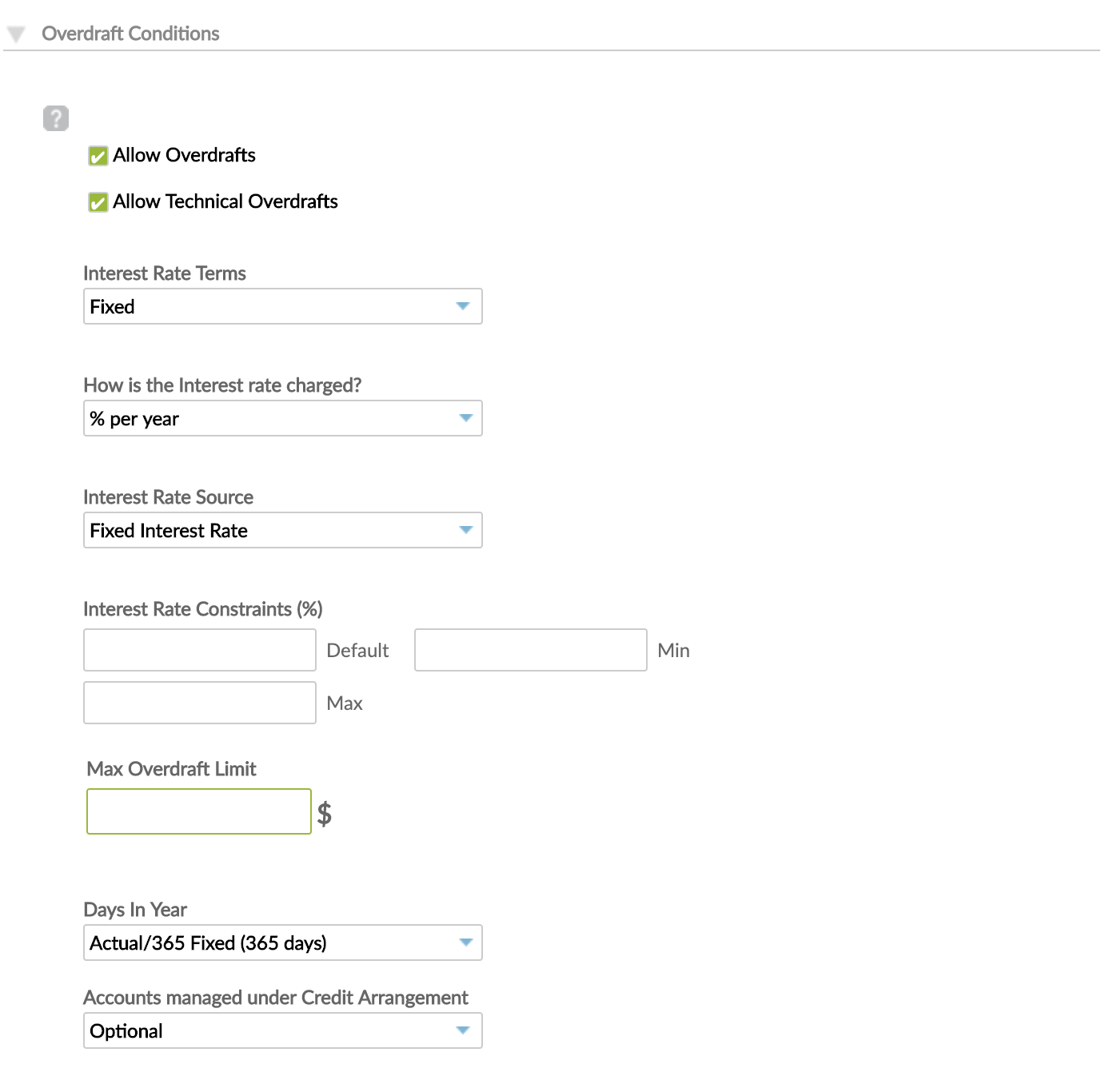
Conversely, if no interest rate is set for authorized overdrafts on the deposit account, then Mambu would not apply any interest on technical overdrafts.

Technical Overdraft Accounting
The accounting rules for technical overdrafts are carried forward from the applied accounting methodology ('Cash' or 'Accrual') on the products with authorized overdrafts. If an accounting methodology was selected with appropriate General Ledger (GL) accounts for authorized overdrafts, then the same accounting rules would apply to technical overdrafts.
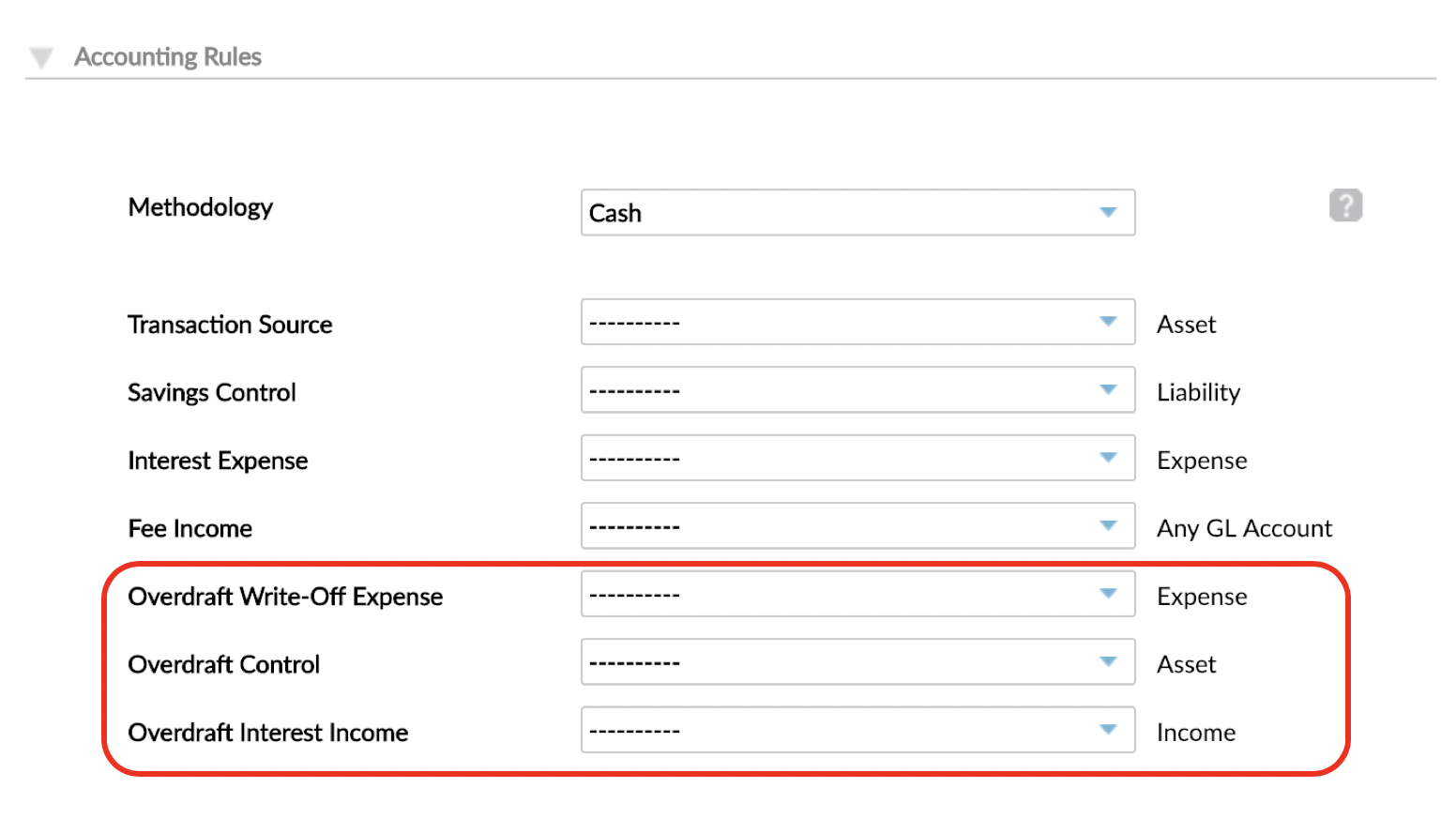
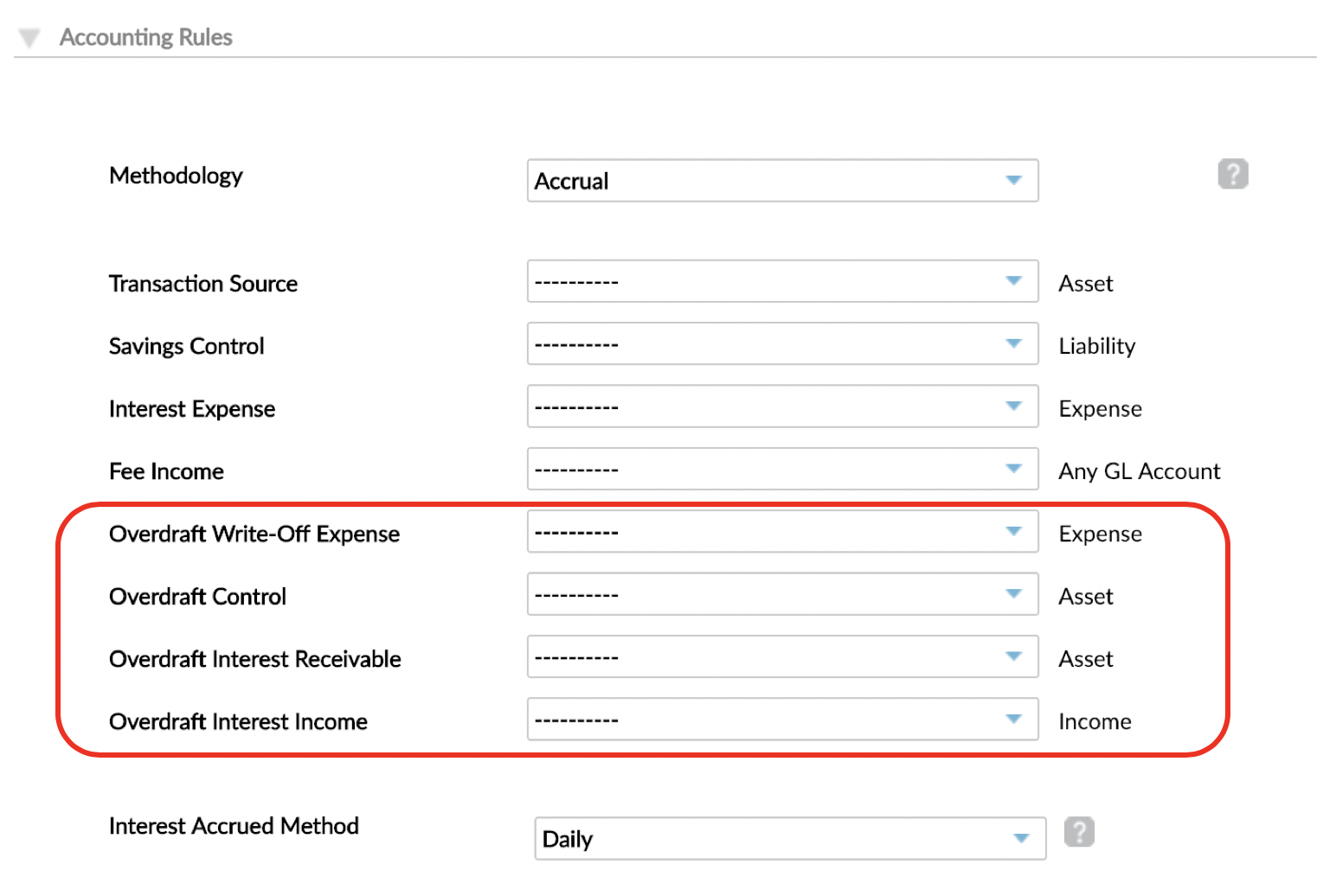
You can read more in our article about Accounting Setup.


